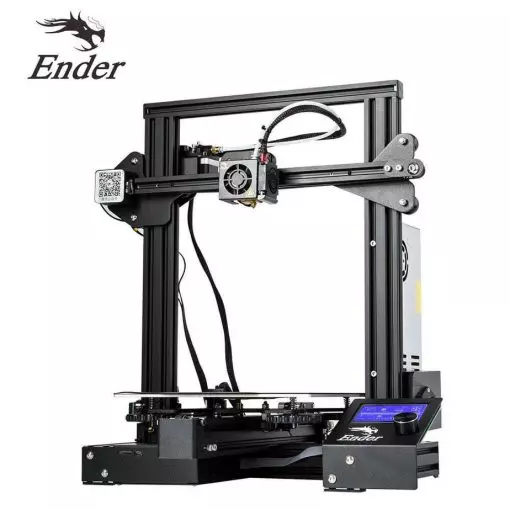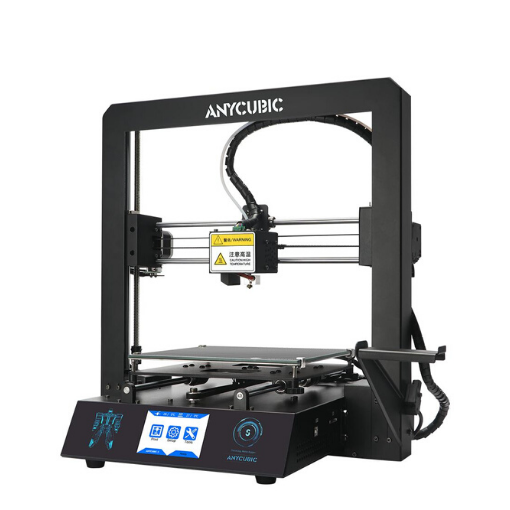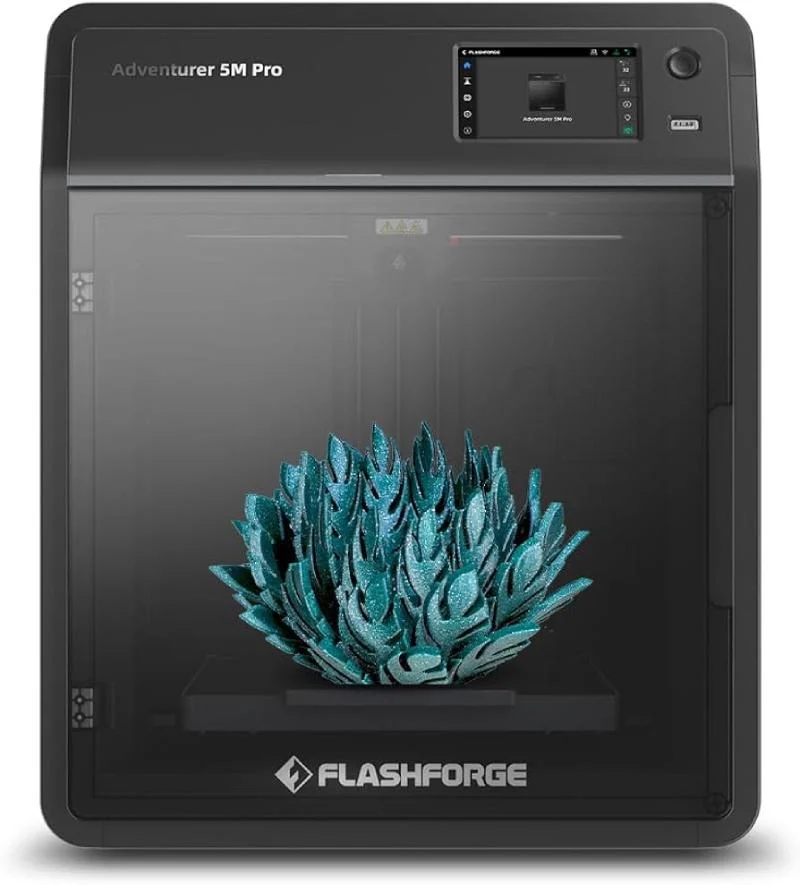Compare Ender 3 vs Mega S vs Adventurer 5M PRO
Comparison between the best 3D printers
Choose the best 3D printer at the best price. The cheapest 3D printers are here.
Buy a 3D printer here with 3D Fila.
 |
 |
 |
|
| Model | Ender 3[BUY Ender 3] |
Mega S |
Adventurer 5M PRO |
| Printing Material | Filament | Filament | Filament |
| Estimated price | $210,00 | $149,00 | $599,00 |
| Fabricante | Creality 3D | Anycubic | Flashforge |
| Release Year | 2018 | 2019 | 2023 |
| Print Volume [mm] | 220x220x250 | 210x210x205 | 220x220x220 |
| Printer Size [mm] | 440x440x465 | 405x410x452 | 380x400x453 |
| Weight [kg] | 6,62 | 14,5 | 10,8 |
| Power Loss Recovery | NO | YES | YES |
| Enclosed printer | NO | NO | NO |
| Bed Leveling | Manual | Manual | Automatic |
| Filament End Sensor | NO | YES | YES |
| Bed type | Heated | Heated | Heated |
| Power supply system | Bowden | Bowden | Direct Drive |
| Standard nozzle | 0,4 | 0,4 | 0,4 |
| Maximum Nozzle Temperature [°C] | 255 | 260 | 280 |
| Maximum Bed Temperature [°C] | 110 | 110 | 110 |
| Maximum printing speed [mm/s] | 180 | 100 | 600 |
| Filament holder | YES | YES | YES |
| Camera for supervision | NO | NO | NO |
| Recommended filaments | PLA, TPU, ABS, PETG | PLA, TPU, ABS, PETG | PLA, PETG, TPU, PLA-CF, PETG-CF |
| Recommended slicers | Cura, Simplify, Slic3r | Cura, Simplify, Slic3r | FlashPrint 5 |
| Maximum Resolution [mm] | 0,1 | 0,1 | 0,1 |
| Processor | 8 bits | 8 bits | |
| Display | Mono | Touchscreen TFT 2,8'' | Touchscreen 4,3'' |
| Power Supply | 24V / 270W | 12V / 300W | 350 W |
| Connectivity | SD / USB | SD / USB | Wifi / Ethernet / USB |
| Operating systems | Windows, Mac, Linux | Windows, Mac, Linux | Windows, Linux, Macbook |
| Date of registration in the system | 2021-04-13 | 2021-04-15 | 2024-07-09 |
| Release date | 2018 | 2019 | 2023 |
| Extra features | The Ender 3 V1 is a DIY assembly 3D printer, a sales leader since 2017, standing out for its cost-benefit. With a wide printing capacity, it has a CNC machined structure for precision and stability. It offers high-precision prints with low noise, thanks to its innovative V-profile and pulleys. It has a self-adhesive magnetic platform for easy removal of models and excellent adhesion. The Ender 3 heats up quickly, reaching 100°C in 5 minutes, ideal for agile prints. It includes protection against power failures, allowing you to resume printing after interruptions, saving time and material. | The Anycubic Mega S offers a printing platform with excellent adhesion, easy removal after cooling. It has a filament sensor for a better experience with flexible materials and a multilingual and intuitive color touchscreen. Assembly is quick, requiring only 8 screws and 3 connections. It has a large build volume (210 x 210 x 205 mm), high positioning accuracy and supports a variety of materials, including TPU, PLA, ABS and wood. It stands out for its solid metal structure, superior stability, high-quality printing with layer resolution of up to 50 microns, Ultrabase for easy adhesion and removal of parts, resumption of printing after power outage, high-quality extruder for flexible filaments, suspended filament support and stable structure that reduces shaking, improving printing quality. | The Flashforge Adventurer 5M PRO features advanced features such as a CoreXY motion system, direct drive extruder, print speeds of up to 600mm/s and maximum acceleration of 20,000mm/s². It features fast nozzle changes, automatic calibration, active vibration compensation, camera monitoring, time-lapse video, HEPA and carbon filters for particles and VOCs, and an intuitive 4.3-inch touchscreen interface. Ideal for printing materials such as PLA, PETG, ABS and TPU. |
| Support for multiple colors and materials (AMS and CFS) | NO | NO | NO |
Notes * |
|||
| Cost-benefit | 6 / 10 | 7 / 10 | 7 / 10 |
| Hardware | 0.5 / 10 | 2 / 10 | 4 / 10 |
| Screen | . | . | . |
| Print volume | 3 / 10 | 3 / 10 | 3 / 10 |
| Performance | 1 / 10 | 1 / 10 | 5 / 10 |
| [BUY Ender 3] |
Conclusion |
| In comparing the three 3D printers—Ender 3, Anycubic Mega S, and Flashforge Adventurer 5M PRO—several key differences emerge that can influence a buyer's decision based on their specific needs and budget. **Ender 3**: As a budget-friendly option, the Ender 3 remains popular for its cost-effectiveness and solid performance. While it requires manual bed leveling and lacks recovery features in case of power loss, it provides a decent printing volume and is suitable for common materials like PLA and ABS. Its DIY assembly nature appeals to hobbyists looking for a hands-on experience. However, it scores lower in terms of hardware reliability and performance compared to higher-priced models. **Anycubic Mega S**: Positioned slightly higher in price, the Mega S offers a more user-friendly experience thanks to its filament sensor and heated bed, which supports better adhesion and easier model removal. It also boasts power loss recovery, which enhances its reliability during long prints. The Metal structure amplifies its stability, making it a strong contender for both beginners and experienced users alike. However, it still has limitations when it comes to print speed and maximum resolution, indicating it may not be suited for rapid prototyping. **Flashforge Adventurer 5M PRO**: This model epitomizes the high-end 3D printing experience, featuring advanced technology such as a direct drive extruder and a rapid printing speed of 600mm/s. Its automatic calibration and active vibration compensation further elevate its usability, making it efficient for professionals working on complex projects. While it comes at a premium price, the range of features—including a touchscreen interface and filtered printing environment—justifies the investment for those needing a reliable and efficient machine. In summary, the Ender 3 is ideal for budget-conscious users who enjoy hands-on assembly, while the Anycubic Mega S strikes a balance between cost and usability, suitable for hobbyists looking for a more streamlined experience. On the other hand, the Flashforge Adventurer 5M PRO caters to professionals needing high-speed and high-quality output, albeit at a higher investment. Ultimately, the choice of which printer to purchase will depend on how much you value features and performance against your budget constraints. |

